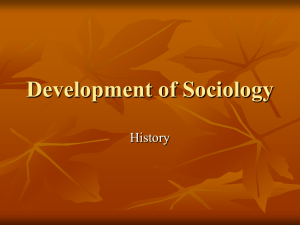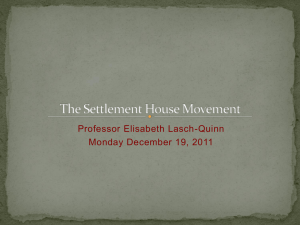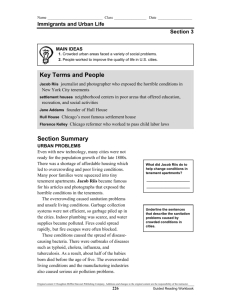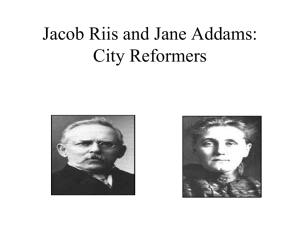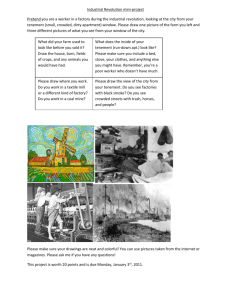City Life - Waverly-Shell Rock School District
advertisement
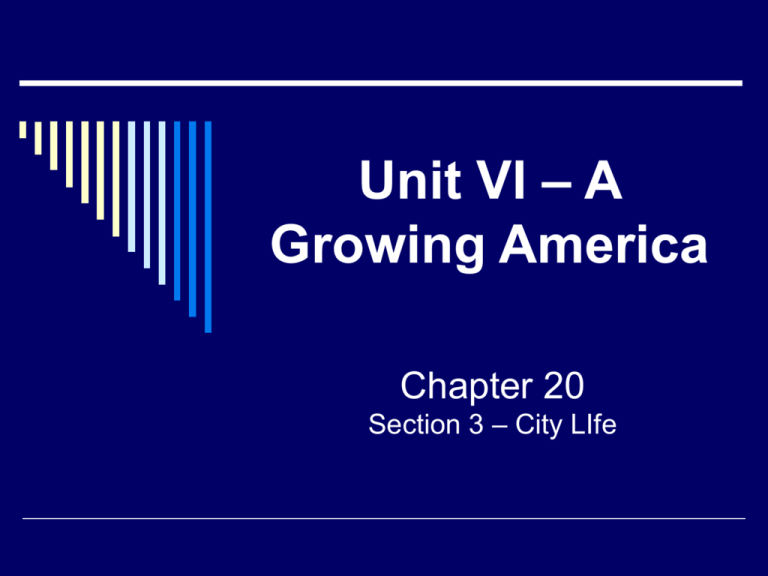
Unit VI – A Growing America Chapter 20 Section 3 – City LIfe City Life The Big Idea The rapid growth of cities in the late 1800s created both challenges and opportunities. Main Ideas • Crowded urban areas faced a variety of social problems. • People worked to improve the quality of life in U.S. cities. Main Idea 1: Crowded urban areas faces a variety of social problems. Urban problems rose as populations grew. Shortages of affordable housing Sanitation problems Water pollution Overcrowding Disease and health problems Air pollution Tenement Life Journalist and photographer Jacob Riis exposed the horrible conditions in New York tenements in his book How the Other Half Lives. Shortages of affordable housing forced families to squeeze into tiny tenement apartments. Many people were forced to live in small spaces. Few or no windows to let in fresh air and sunshine Indoor plumbing scarce Diseases like cholera, tuberculosis, and influenza spread quickly in these crowded neighborhoods. Jacob Riis and Upton Sinclair In 1877 Riis became a police reporter for the New York Tribune. In the 1880s his work gravitated towards reform and he worked with other New York reformers then crusading for better living conditions for the thousands of immigrants flocking to New York in search of new opportunities. He constantly argued that the "poor were the victims rather than the makers of their fate". As a writer Sinclair gained fame in 1906 with the novel The Jungle, a report on the dirty conditions in the Chicago meatpacking industry. The book won Sinclair fame and fortune, and led to the implementation of the Pure Food and Drug Act in 1906. Upton Sinclair- The Jungle – 3:11 min. Urban Problems Name four diseases caused by poor sanitation? If a family living in Chicago had six babies during the 1870’s, how many of them could they expect to live past age 5? What kinds of problems did growing city governments in the late 1800’s face, and which problem they try to fix first? Main Idea 2: People worked to improve the quality of life in U.S. cities. Many private organizations stepped in to help the poor. Reformer Lawrence Veiller led an effort to improve tenement conditions through the Charity Organization Society. Helped to get the 1901 New York State Tenement House Act passed Some individuals set up settlement houses, or neighborhood centers in poor areas that offered education, recreation, and social activities. Settlement House Movement Settlement House- volunteers offer immigrants services- language instruction, job training, social activities, clubs and sports. Over 400 settlement house in America by 1910 Social Gospel- faith is expressed through good works. Churches had moral duty to help solve social problems. Settlement Houses One of the most famous settlement houses was Hull House Founded in Chicago in 1889 by reformers Jane Addams and Ellen Gates Starr Florence Kelley, a reformer at Hull House, visited sweatshops and wrote about the problems there. Convinced lawmakers to take action and in 1893, Illinois passed a law to limit working hours for women and to prevent child-labor Became Illinois’s chief factory inspector and helped to enforce the law Settlement houses continued to provide programs and services through the 1900s. Jane Addams There is an old saying that says, “Behind every good man there stands a good woman.” But throughout history, was that man just standing in the way of the woman? Jane Addams Birth: 1860, Cedarville, Illinois Death: 1935, Chicago, Illinois Founder of the Settlement House Movement. She and her friend Ellen Starr founded Hull House in the slums of Chicago in 1889. She wrote 11 books, numerous articles and headed various organizations. She participated in the International Congress of Women at the Hague in 1915 First American Woman to receive the Nobel Peace Prize Hull House, founded 1889 By 1893, Hull-House had become a center for a wide variety of clubs, functions, classes and activities for the neighborhood. Addams and her associates championed the protection of immigrants, child labor laws and recreation facilities for children, industrial safety, juvenile courts, recognition of labor unions, woman suffrage, and world peace. Addams never drew a salary from Hull-House, but instead used her inheritance and the proceeds from her many books and articles to live on as well as to underwrite these causes. Hull House- National Historic Landmark Around Hull-House, immigrants to Chicago crowded into a residential and industrial neighborhood. Italians, Russian and Polish Jews, Irish, Germans, Greeks and Bohemians predominated. Hull House provided services for the neighborhood, such as kindergarten and daycare facilities for children of working mothers, an employment bureau, an art gallery, libraries, and music and art classes. By 1900 the Jane Club (a cooperative residence for working women), the first Little Theater in America, a Labor Museum and a meeting place for trade union groups. The original Hull mansion remains, a national historic landmark in June of 1967 Improving City Life What was the purpose of How the Other Half Lives? How did Florence Kelly help reform working conditions? How might the 1893 Illinois labor law have changed the lives of children?
